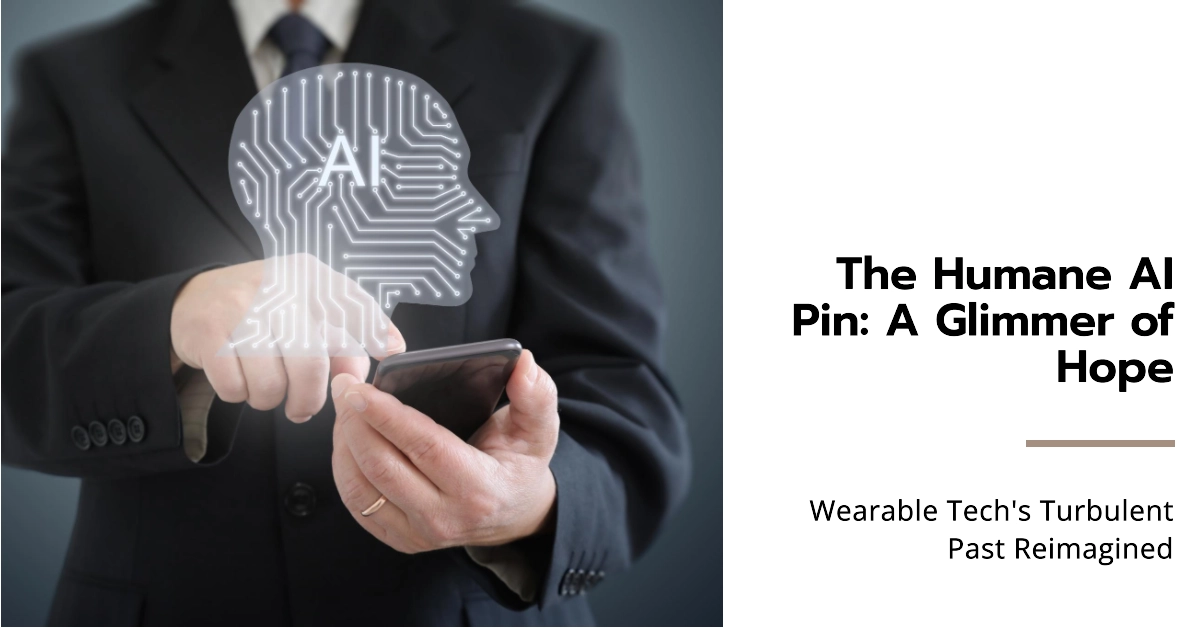In the ever-evolving world of technology, wearable devices have emerged as a transformative force, revolutionizing the way we interact with the digital realm. Among the latest entrants into this dynamic landscape is the Humane Ai Pin, a groundbreaking wearable that promises to redefine our relationship with technology.
With its innovative design and cutting-edge features, the Ai Pin has captured the imagination of tech enthusiasts and casual users alike.
However, the question remains: will the Ai Pin follow in the footsteps of Google Glass, a promising device that ultimately failed to gain widespread adoption, or will it usher in a new era of wearable technology?
Delving into the Humane Ai Pin: A Comprehensive Overview
The Humane Ai Pin is a unique wearable device that distinguishes itself from its predecessors by employing laser projection technology to display information directly onto the user’s palm. This innovative approach eliminates the need for a traditional screen, offering a more natural and intuitive way to interact with technology.
The Ai Pin’s sleek and minimalist design complements its functionality, making it a stylish accessory that seamlessly blends into everyday attire.
Unveiling the Ai Pin’s Capabilities and Features
Beneath its unassuming exterior, the Humane Ai Pin harbors a wealth of capabilities and features that empower users to navigate the digital world with newfound convenience and efficiency.
The Ai Pin serves as a personal assistant, providing real-time notifications, reminders, and updates. It also offers hands-free access to a multitude of functions, including messaging, navigation, and voice control.
Additionally, the Ai Pin boasts a built-in camera, enabling users to capture photos and videos without the need for a separate device.
Addressing the Challenges and Potential Concerns
Despite its promising potential, the Humane Ai Pin faces several challenges that could hinder its widespread adoption. One major concern is battery life, as the Ai Pin’s compact design necessitates a relatively small battery.
Additionally, the Ai Pin’s reliance on laser projection technology raises questions about its visibility under varying lighting conditions.
Moreover, the potential privacy implications of a device that constantly projects notifications onto the user’s hand warrant careful consideration.
Navigating the Path to Success: Lessons from Google Glass
The Humane Ai Pin’s journey to success will undoubtedly be shaped by the lessons learned from Google Glass. Google Glass, a wearable device that aimed to revolutionize augmented reality, faced several challenges that ultimately led to its commercial demise. These challenges included privacy concerns, limited functionality, and a high price tag.
To avoid similar pitfalls, Humane must carefully address these issues, ensuring that the Ai Pin offers compelling value to users while prioritizing privacy and security.
Embracing the Ai Pin’s Promise for a Future-Forward Technology
The Humane Ai Pin represents a bold step forward in wearable technology, offering a glimpse into a future where humans interact with technology in a more seamless and intuitive manner. While challenges remain, the Ai Pin’s potential to enhance our daily lives is undeniable.
As the device continues to evolve, it has the potential to redefine our relationship with technology, paving the way for a more integrated and user-centric digital experience. The future of the Ai Pin hangs in the balance, but its promise for a more connected and effortless technological future is undeniable.
Only time will tell whether the Ai Pin will achieve widespread adoption or succumb to the same challenges that befell Google Glass. However, one thing is certain: the Ai Pin marks a significant milestone in the evolution of wearable technology, challenging conventional notions of how we interact with the digital world.
